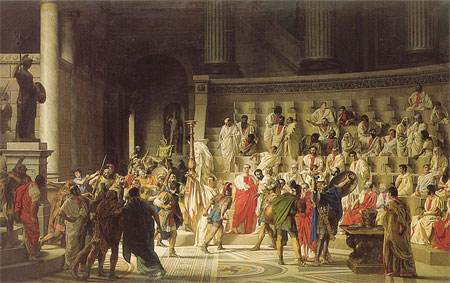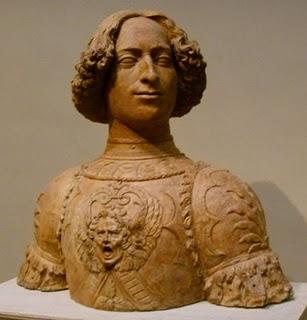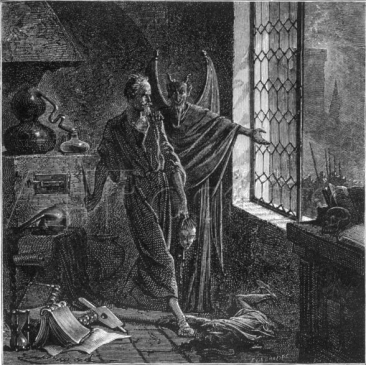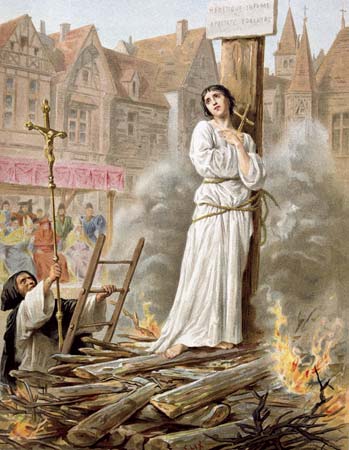We are bombarded by our television screens, on a daily basis, with seemingly senseless violence, grotesque executions and barbaric practices. Indeed, shows such as Game of Thrones and Vikings make common use of such themes and even, at times, use it to drive their respective plots forwards.Although this may all seem very detached from reality – such shows are fictitious or very loosely based on real events – our own history offers far darker tales than those that are drawn from the minds of writers and producers. Indeed,this may be where such a fascination with violence comes from.
It all began a long time ago. A very long time ago. In 1991 the body of a man was found frozen in the Ötztal Alps on the Austrian – Italian border. The body was frozen in ice and was initially believed to be the body of a lost mountaineer. However, after scientific analysis, it was found to have belonged to a man who lived between 3359 and 3105 BCE. At the time, it seemed to be the discovery of the remains of a peaceful mountain dweller who had died due to exposure or a man who had simply gotten lost and starved before being frozen. 
The remarkable discovery took a macabre turn when it was discovered that Ötzi had an arrow embedded in his left shoulder. Further research revealed that Ötzi had bruises and cuts on his hands, wrists and chest. Moreover, he had suffered cerebral trauma as a result of a blow to the head. The exact cause that led to the blow on his head that eventually killed him is unclear. However, it has become quite clear that Ötzi suffered a horrific death. A number of theories, following this gruesome discovery, have been posited. He may have been the victim of a ritual sacrifice: his life offered to appease whichever gods the people worshiped. Some have claimed he was a casualty of a battle and others: that he was murdered.
In War: What Is It Good For? Ian Morris used anthropological and archaeological evidence to examine the prevalence of violence in early population groups. He concludes that as many as 1 in 10 people died violent deaths at the earlier stages of modern homo sapien development. This flies in the face of the many theories and conceptions we might have of the hunter gatherer and early nomadic societies. Indeed, the idea of the Noble Savage (which has already met it’s demise through other studies) is falsified.
 But what about more civilized times? Have there ever been civilized times? Of course, most of us are familiar with the assassination of Julius Caesar but the Roman empire has played host to a number of both successful and failed assassination attempts. Galba, who ruled Rome for an entire seven months before his death, was assassinated by his own Praetorians. After his demise, Galba’s head was brought to Otho (who had orchestrated the assassination) who promptly gave it to his camp followers who then paraded and mocked it. His head was then buried in a tomb by the Aurelian Road. The history of Rome is filled with such incidents and both usurpers and legitimate rulers have often found themselves at the end of the blade.
But what about more civilized times? Have there ever been civilized times? Of course, most of us are familiar with the assassination of Julius Caesar but the Roman empire has played host to a number of both successful and failed assassination attempts. Galba, who ruled Rome for an entire seven months before his death, was assassinated by his own Praetorians. After his demise, Galba’s head was brought to Otho (who had orchestrated the assassination) who promptly gave it to his camp followers who then paraded and mocked it. His head was then buried in a tomb by the Aurelian Road. The history of Rome is filled with such incidents and both usurpers and legitimate rulers have often found themselves at the end of the blade.
Hundreds of years later and Italy finds itself, yet again, in the grips of a politically motivated violence.  This time, with the Pope as a co-conspirator. The Medici family ruled Florence, much to the dismay of the Pazzi, who were another powerful Florentine family. In 1478, the assassins struck at Lorenzo and his brother Giuliano de Medici. Giuliano, who was stabbed in excess of 19 times, eventually bled to death on the cathedral floor. The assassination had taken place during High Mass. His brother, Lorenzo, survived and the Pazzi plan fell apart as the citizen of Florence threw themselves behind the Medici. In the ensuing chaos the assassins were killed and the Pazzi family were hunted down and murdered.
This time, with the Pope as a co-conspirator. The Medici family ruled Florence, much to the dismay of the Pazzi, who were another powerful Florentine family. In 1478, the assassins struck at Lorenzo and his brother Giuliano de Medici. Giuliano, who was stabbed in excess of 19 times, eventually bled to death on the cathedral floor. The assassination had taken place during High Mass. His brother, Lorenzo, survived and the Pazzi plan fell apart as the citizen of Florence threw themselves behind the Medici. In the ensuing chaos the assassins were killed and the Pazzi family were hunted down and murdered.
It was not just political murders, war and pillaging that occupied the medieval rulers. Sexual deviancy, rape and ritual murder was more common place than is often thought. Gilles de Rais , who shall go down in history as “Bluebeard”, being one of the most infamous perpetrators of such acts. After being visited by a practitioner of the dark arts. Gilles became obsessed with the abduction, rape and murder of the boys and girls of the village he ruled.  The children were abducted by men he had hired and who watched as he undertook these grisly acts. Dozens of children were killed by him and he often kept “a few handsome heads” as “relics”. Eventually the Church caught up with him and he was left to hang in a gibbet before being cast into the flames.
The children were abducted by men he had hired and who watched as he undertook these grisly acts. Dozens of children were killed by him and he often kept “a few handsome heads” as “relics”. Eventually the Church caught up with him and he was left to hang in a gibbet before being cast into the flames.
Witchcraft and heresy became an obsession of the Church during the darker years of European history. Indeed, even in a time of religious reformation and the supposed ushering in of a new era, Martin Luther wrote, in the Sermon of Exodus in 1526, that it is a just law to do away with sorceresses. Witches, even those who do no harm, shall be burned as they have made a pact with the devil himself. Such superstition and a fear of the paranormal led, as these things often do, to senseless violence and the “purging” of Europe of witchcraft.
All witchcraft is heresy but not all heresy is witchcraft. The distinction became important as those who opposed the Church were brought to heel. The Church used the power of the Inquisition and it’s loyal followers to carry out a series of horrific attacks against dissidents and political enemies alike. The heresy laws provided a catch-all for those the Church wished to see dead. As witchcraft was simply one of the many violations of the law of the Church that fell under heresy, one bore the onus of proving not only that one was innocent of witchcraft, but all of the other charges brought against their person. If an accused could show that he (but normally she) was innocent of witchcraft, she may still be found guilty of heresy and the same punishment would ensue. The Maid of Orléans: Joan of Arc is a perfect example of this. After, unsuccessfully, prosecuting her for witchcraft, the Church managed to find her guilty of a number of other offences. She was, eventually, burnt on the stake for the crimes of cross-dressing(a punishable offence) and other such spurious charges.
Despite our fascination with television shows, movies and books and the violence embedded in them, it is readily apparent that our own history offers a more grotesque story than any writer or producer could ever imagine. Indeed, George RR Martin has noted that there are scenes just as harrowing and gruesome as those depicted in “A Song of Ice and Fire” in our own history. Although this post has used examples from history, one would be remiss not to note the abundance of contemporary examples. Steven Pinker, in The Better Angels of our Nature, claims that we are living in the most peaceful time in our species’ existence. Although this may be true, I think this topic is better left for another time.
